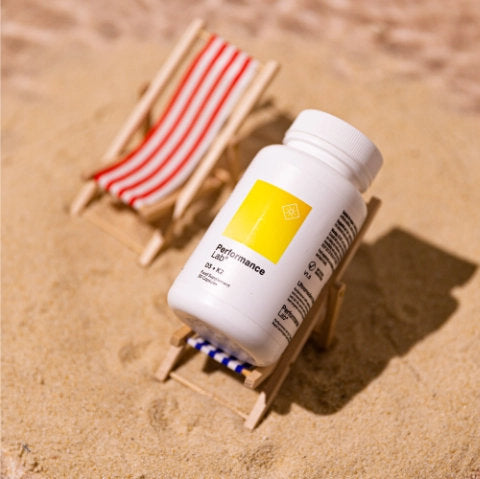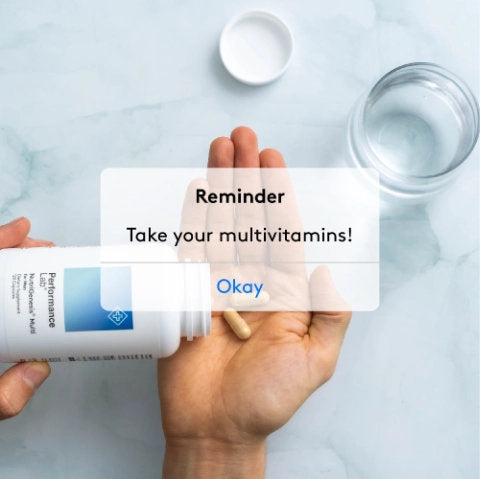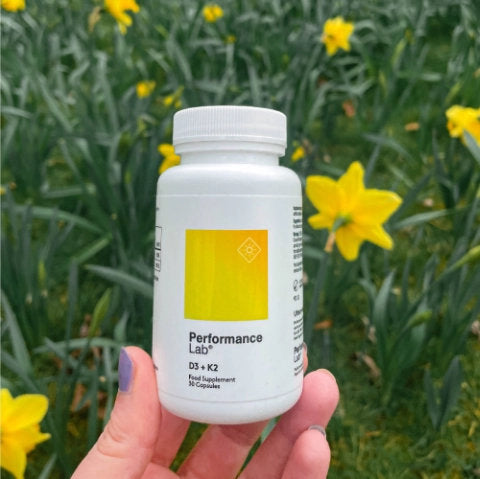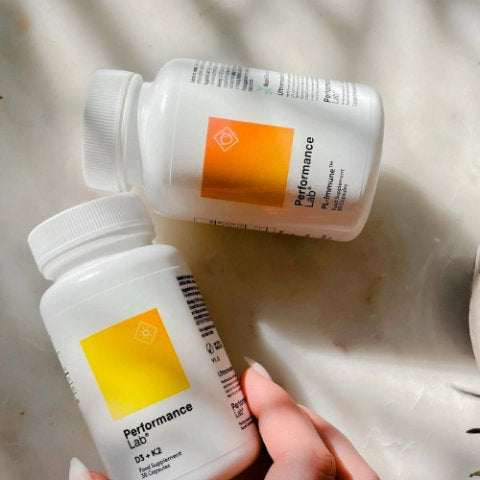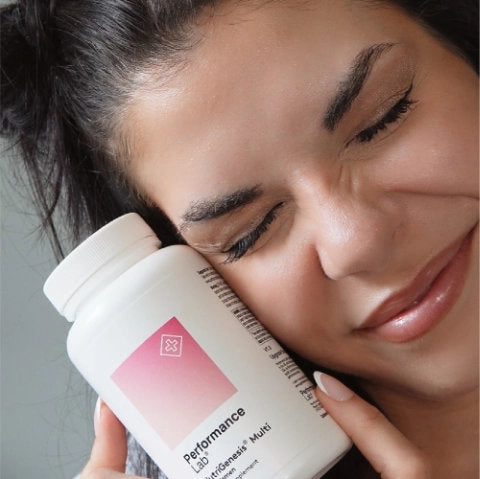The workout was hell, but you showed up and gave it your all.
And now you've got that day-after ache.
Is it strange to almost enjoy that feeling of sore muscles?
It feels like your body's way of saying you did good, you worked hard.
For the most part, it's normal to feel pain. The aim is to push yourself. And this discomfort is a natural part of the body adapting to exercise. Muscle pain can be a sign that your body is strengthening. But there's a fine line between your body taking on the challenge, and a pain that could hinder performance.
So what can we do about it?
EPA, an omega-3 fatty acid, has been recognized for its role in combating muscle weakness and soreness. In this article, we'll explore its benefits, and reveal why it might just be the muscle-soothing nutrient you've been missing.
Importance of Muscle Recovery in Fitness
Muscle recovery goes beyond the simple notion of 'rest days'. It starts with proactive steps like fine-tuning your stretching routine and monitoring your diet.
Stretching and Injury Prevention: First things first, consider your stretching routine. Certain types of exercises benefit from specific types of stretches. Knowing your dynamic from your static stretching, and the best time to do them, is key to avoiding injury. (1)
Nutrition for Muscle Support: Secondly, your diet plays a critical role. Are you getting the right nutrients to keep your muscles well-fueled and supported for recovery? Research carried out by the University of Westminster, suggests that omega-3 supplements may help to reduce muscle soreness post-exercise. (2)
Muscle recovery is a fundamental aspect of any exercise routine. It's a complex, multifaceted process where the body not only repairs the damage inflicted during exercise, but also adapts in order to better handle future physical demands.
When we engage in any form of strenuous exercise, especially those exercises that are high-intensity or unfamiliar, microscopic tears occur in our muscle fibers. This is known as muscle protein breakdown. (3) Muscle tears might sound alarming, but it's a natural and necessary step towards strengthening our muscles. That soreness we feel after a workout, referred to as delayed onset muscle soreness, or DOMS, is a direct result of this muscle fiber damage.

Understanding DOMS and its Role in Muscle Recovery
DOMS symptoms include muscle pain, stiffness, and muscle weakness. Symptoms are usually felt in the hours and days following intense exercise, normally peaking 24 to 72 hours post-workout. Delayed onset muscle soreness is a direct result of muscle fiber damage.
The body responds to these tiny tears by triggering an inflammatory response. We normally think of inflammation as a bad thing, but in this situation, it's a crucial part of the repair process.
Inflammation signals the body to start repairing and reinforcing these muscle fibers. Specialized cells called satellite cells play a vital role here. They increase rapidly and fuse to the damaged muscle fibers, aiding in the repair and growth of these fibers.
While inflammation is a natural and necessary part of our body's healing process, chronic or excessive inflammation can delay recovery. EPA is known for its anti-inflammatory properties, which can help modulate this response. Potentially enhancing our body's ability to heal and strengthen after exercise.
Hormones and Muscle Growth
Another key aspect of muscle recovery is the role of hormones and nutrients. Exercise stimulates the release of various hormones, including insulin-like growth factor (IGF-1), testosterone, and human growth hormone (HGH), all of which are vital for muscle growth and repair. The recovery phase is when nutrients, particularly amino acids from proteins, are crucial. These nutrients are the building blocks that help repair the muscle fibers, making protein intake and overall nutrition a vital part of the recovery process.
EPA aids muscle recovery by reducing inflammation, which in turn, may enhance the effectiveness of muscle growth and repair hormones like IGF-1, testosterone, and HGH.
Muscle Recovery and Injury Prevention
Adequate muscle recovery also helps prevent injury. Overworked muscles and joints can lead to imbalances and muscle weakness, increasing the risk of strains, sprains, and other injuries. By allowing our muscles time to repair and strengthen, not only can we improve our performance, but we can also reduce the likelihood of injury.
Recovery isn't a one-size-fits-all process though. It varies greatly depending on our individual fitness level, the intensity of the workout, and our overall health and nutritional status.
Role of Supplements in Enhancing Muscle Recovery
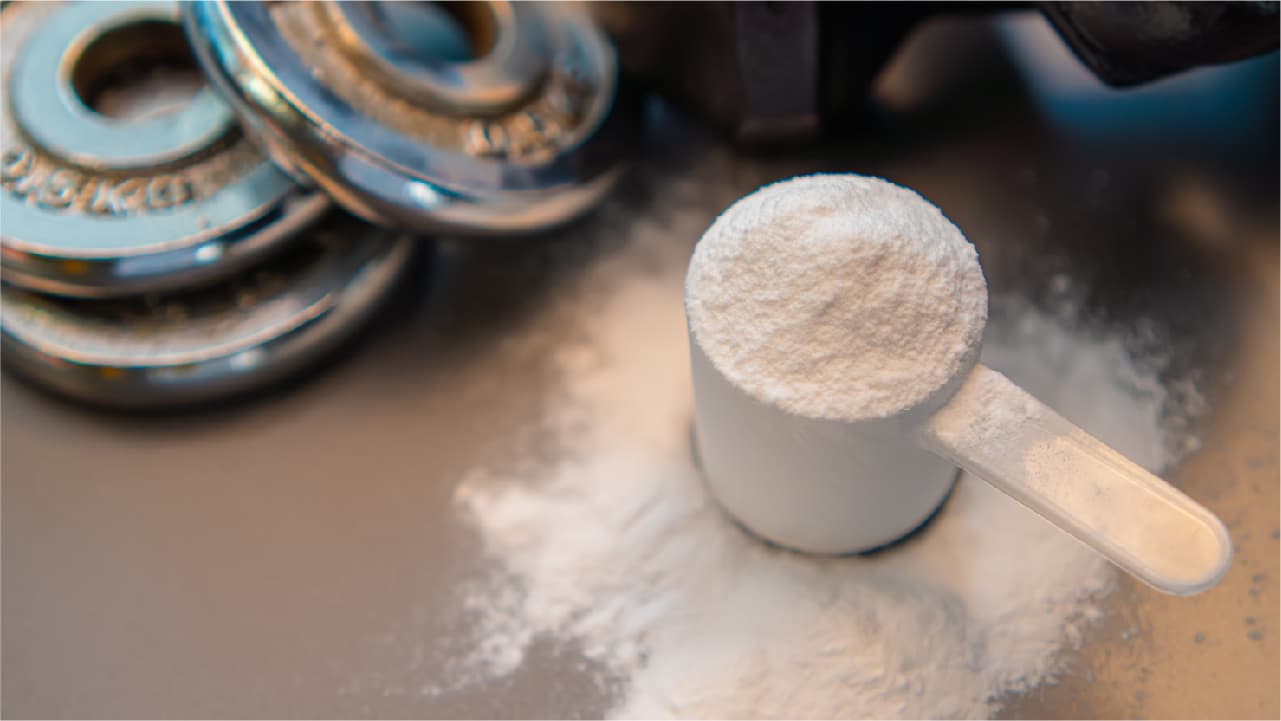
Pre-workouts, protein shakes, smoothies and supplements are all regular staples in modern fitness regimes. While a balanced diet is fundamental, supplements offer additional, targeted support to the body's natural recovery processes. They each play specific roles in repairing our muscles.
Protein Supplements
Protein is the building block of muscle tissue. Supplements like whey, casein, or plant-based options are crucial for muscle repair. They supply essential amino acids needed for muscle protein synthesis, especially after a workout. Whey protein in particular, is rapidly absorbed, making it ideal for a post workout kickstart to the muscle repair process.
Branched-Chain Amino Acids (BCAAs)
BCAAs are essential amino acids and are pivotal to muscle recovery. They are metabolized directly in the muscle tissues and are critical for protein synthesis. (4) Supplementing with BCAAs can reduce muscle pain, decrease exercise-induced muscle damage, and promote muscle protein synthesis.
Creatine
Creatine works by increasing the availability of ATP (adenosine triphosphate), the primary energy molecule in cells. (5) It's well known for its role in improving strength, increasing lean muscle, and helping muscles recover more quickly during exercise.
Glutamine
Glutamine is an amino acid that plays a significant role in muscle recovery. During intense training, glutamine levels in the body can be depleted, which might lead to slower muscle repair and a weakened immune system. Supplementing with glutamine can replenish this nutrient, enhancing protein synthesis rates crucial for muscle repair. (6)
Antioxidants and Anti-inflammatory Supplements
Supplements like curcumin, tart cherry juice, and vitamin C have antioxidant and anti-inflammatory properties. These supplements can help mitigate oxidative stress and reduce inflammation even in the muscles, promoting faster recovery and reducing the risk of injury.
Omega-3 Fatty Acids
Omega-3 fatty acids, particularly EPA and DHA, are known for their anti-inflammatory properties. Supplementing with omega-3s can help reduce the inflammation associated with muscle recovery and may aid in quicker recovery and reduced muscle soreness. (7) They also play a role in maintaining cell membrane health and muscle metabolism.
Timing and dosage are everything. So, if you're thinking of integrating any supplements into a fitness regime, it's always a good idea to do so under the guidance of a doctor, healthcare provider or a nutritionist. For instance, protein and BCAA supplements are most effective when consumed post-workout, while creatine can be taken before or after exercise.
Additionally, the quality control of supplements is paramount. Choosing high-quality, third-party tested supplements ensures purity and effectiveness. Athletes, in particular, should look for supplements that are certified free of banned substances.

The Connection between Omega-3 Fatty Acids and Exercise
Omega-3 fatty acids, particularly eicosapentaenoic acid (EPA) and docosahexaenoic acid (DHA), play a crucial role in muscle health and recovery. These polyunsaturated fats, commonly found in fish oils, flaxseeds, and walnuts, contribute to improved muscle function by enhancing muscle contraction and relaxation. Studies have shown that omega-3 fatty acids help to reduce inflammation. (8) And this helps muscles recover quicker from post exercise soreness. In addition, omega-3 fatty acids improve oxygen utilization in muscles, (9) which can enhance endurance.
What is EPA?
EPA, or eicosapentaenoic acid, is a type of omega-3 fatty acid found predominantly in fatty fish like salmon and mackerel. EPA job shares with DHA on a lot of human health aspects such as heart function, blood pressure and mental health. But EPA is particularly effective in reducing inflammation associated with muscle damage.
EPA's effects on muscle soreness
Reduces Inflammation
After intense workouts, our muscles undergo stress and inflammation. EPA steps in as an anti-inflammatory agent, helping to reduce this inflammation. This is not just about easing pain; it's about preparing our muscles for efficient recovery. By controlling inflammation, EPA ensures that the post-exercise healing process is effective and lays the groundwork for stronger muscle rebuilding.
Supports Muscle Recovery
Speedy recovery from workouts is crucial for anyone looking to enhance their physical performance. EPA's anti-inflammatory action may play a role in shortening recovery time.
Potential in Muscle Protein Synthesis
While research is still ongoing, there's potential for EPA to positively influence muscle protein synthesis - the process where the body builds new muscle proteins. (10) This aspect is particularly crucial for muscle growth and repair, an essential component of gaining muscle strength.

Helps in Long-term Muscle Health
Regular intake of EPA might not only be beneficial for short-term recovery but also for maintaining long-term muscle health. This includes potentially reducing the risk of muscle loss due to aging or inactivity. (11)
EPA in Athletic Performance
By aiding in quicker recovery, reducing the risk of inflammation-related injuries, and possibly enhancing muscle strength, for athletes, adding EPA to their diet can mean better performance.
How to Incorporate EPA for Muscle Soreness Relief
Understanding how to effectively include EPA in your routine is key. Here's how you can get the best from this omega-3 fatty acid:
Dietary Sources of EPA: Fatty fish like salmon, mackerel, and sardines are excellent sources of EPA. Regularly including these in your diet not only meets your EPA needs but also provides other health benefits.
Supplementation Choices: If fish isn't your preference or you have dietary restrictions, EPA supplements are a great alternative. Options include fish oil capsules and vegan-friendly algal oil supplements, each can offer a high concentration of EPA.
Understanding Dosage: The optimal daily intake of EPA for muscle soreness relief is still being studied, but current research points towards a range of 0.6 to 2.0 grams. This dosage can vary based on individual needs and health conditions.

Importance of Timing: Long-term, consistent intake of EPA might be more effective in reducing muscle soreness compared to short-term use. This sustained approach allows your body to better utilize EPA for muscle recovery.
EPA and Exercise: Aligning your EPA intake with your exercise routine can optimize its benefits for muscle recovery and overall performance.
Consultation Is Key: Always discuss with a healthcare provider to determine the best EPA intake plan for your specific health needs and fitness goals.
Synergistic Role of EPA and DHA in Muscle Recovery
While EPA plays a significant role in reducing inflammation and aiding muscle recovery, it's important to acknowledge the synergistic relationship between EPA and DHA, another crucial omega-3 fatty acid. Both EPA and DHA work together to support overall muscle health and recovery. DHA, known for its benefits in brain and eye health, also contributes to muscle recovery. It works in tandem with EPA to enhance muscle protein synthesis and to reduce oxidative stress in muscles post-exercise. This synergistic effect of DHA and EPA is crucial for not only reducing muscle soreness but also for improving overall muscle health and function. So, if you're considering supplements for muscle recovery, it's beneficial to look for products that contain both EPA and DHA to fully support the body's recovery process and muscle health.
Optimizing Muscle Health with the Right Supplement: Performance Lab Omega-3
Choosing the right supplement is crucial. Performance Lab Omega-3 is an advanced, full spectrum omega-3 formula with EPA and DHA. It's sourced directly from algal oil so it's better for the planet, better for you, with unmatched purity and potency.

It's free from the fishy taste or smell you sometimes get with fish oils, and is especially suitable for vegans and vegetarians, as it is sourced from non-GMO ocean algae. Making it environmentally friendly and free from pollutants.





